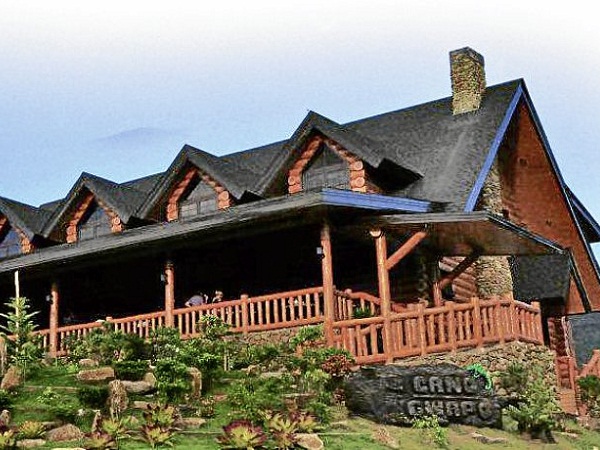New eco-tourism destination rises in Negros

INITIALLY developed as a retirement home, Campuestohan Highland Resort is now being positioned as a tourist destination.
BACOLOD CITY—A five-hectare resort in Talisay City, Negros Occidental will soon start operations as an eco-tourism destination and give a boost to the city’s tourism industry.
The venue, called Campuestohan Highland Resort, is located in Barangay Cabatagan near the forest along the boundary of the cities of Bacolod and Talisay and provides a view of most of Negros Occidental and Panay Island at a distance.
The site of the resort was acquired by Ricardo Tan, formerly an assistant secretary of the Department of Transportation and Communications, for his wife Nita who asked that a retirement home be built there.
Tan said he bought the Campuestohan property in 2010 before he even saw it, adding it was his wife who saw and fell in love with the place.
But the couple forgot about retirement when they saw the potential of the area as a business venture. They threw themselves into developing the place as a resort.
It will be a resort that both foreign and local tourists will truly enjoy, Tan said.
“We have the best view of Negros. It’s fantastic. You have to see it to believe,” he said.
On a clear day, from the resort, one can see airplanes landing at the Bacolod Silay Airport, fast ferries crossing the sea to Panay, or rain pouring over Bacolod City while the sun shines over nearby towns and cities.
And at night, one can see the distant lights of Negros’ cities from the resort, where the air is fresh and the soothing sounds of nature lull you to sleep.
The resort, which is about 35 to 40 minutes from downtown Bacolod City, has a main log cabin with seven rooms and a huge balcony for entertainment. It also has 20 cottages shaped like huts of early tribesmen—which also look like igloos—for guests.
It has a playground, adult and children’s pools with dressing rooms shaped like giant tree trunks and picnic huts. The grounds have figures of an elephant and rhinoceros made of concrete, with more animal figures being planned.
Tan said they have invested a substantial amount in the resort, which has overnight accommodations for 130 persons in the log cabin and cottages. It also has a campsite where guests could put up tents.
The construction of the structures started last June 2011 and is still ongoing.
A pavilion for conferences and parties and an artificial river are also being built at the resort. Tan also plans to revive his famous Sinugba Restaurant.
The resort will also have a place where guests can go horseback riding, a sunken garden, and a wedding altar and carriage for couples who wish to get married there, he said.
Tan said he designed the facilities at the resort along with his architect, while his wife has been busy with the landscaping.
He also added that development of the resort in the area would improve the livelihood of residents as the resort would buy the crops they grow.
The resort will also help boost the city’s tourism industry.
Talisay City has registered an increase in the number of tourists in 2009 and 2010. In 2009, the city recorded 20,488 tourists, way above the 2,362 in the previous year. Tourist arrivals grew further to 40,592 in 2010.
One of Talisay City’s attractions is The Ruins, a grand mansion built by Don Mariano Lacson following the death of his wife Maria Braga.
However, a fire set by guerilla fighters during the Japanese occupation—so the mansion could not be used as a headquarters of Japanese forces—reduced the structure to ruins, but left the foundations standing.
The other attractions are the Tana Dikang Lizares Ancestral House, the Don Simplicio Lizares Mansion, Barangay Concepcion Rambutan and Lanzones Plantation, the Amalia High Valued Crop Farms and the Henares Organic and Vermiculture Farm, among others.
Talisay City government also plans to implement a restoration and redevelopment project of the city’s plaza complex that aims to convert the plaza, the Talisay City Central Public Market and the old Talisay City Hall into a mixed-use facility.
Aside from this, the historic San Nicholas de Tolentino Church which was built in 1850 and the old Lizares mansion will be restored and conserved to highlight the richness of Talisay’s history that will boost the project’s tourism value.